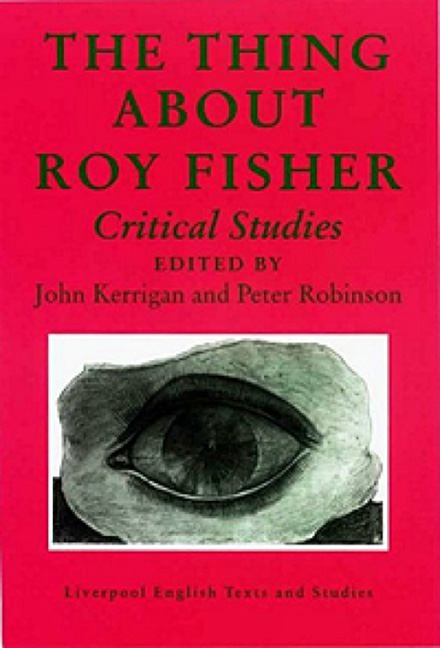Book contents
- Frontmatter
- Contents
- Notes on Contributors
- Acknowledgements
- Abbreviations
- Introduction
- 1 Roy Fisher on Location
- 2 ‘Menacing Works in my Isolation’: Early Pieces
- 3 TheWork of a Left-Handed Man
- 4 Osmotic Investigations and Mutant Poems: An Americanist Poetic
- 5 ‘Making Forms with Remarks’: The Prose
- 6 Cutting-Edge Poetics: Roy Fisher's ‘Language Book’
- 7 A Burning Monochrome: Fisher's Block
- 8 ‘The Secret Laugh of the World’
- 9 ‘Exhibiting Unpreparedness’: Self, World, and Poetry
- 10 ‘Coming into their Own’: Roy Fisher and John Cowper Powys
- 11 A Furnace and the Life of the Dead
- 12 Last Things
- Roy Fisher: A Bibliography
- Indexes
1 - Roy Fisher on Location
- Frontmatter
- Contents
- Notes on Contributors
- Acknowledgements
- Abbreviations
- Introduction
- 1 Roy Fisher on Location
- 2 ‘Menacing Works in my Isolation’: Early Pieces
- 3 TheWork of a Left-Handed Man
- 4 Osmotic Investigations and Mutant Poems: An Americanist Poetic
- 5 ‘Making Forms with Remarks’: The Prose
- 6 Cutting-Edge Poetics: Roy Fisher's ‘Language Book’
- 7 A Burning Monochrome: Fisher's Block
- 8 ‘The Secret Laugh of the World’
- 9 ‘Exhibiting Unpreparedness’: Self, World, and Poetry
- 10 ‘Coming into their Own’: Roy Fisher and John Cowper Powys
- 11 A Furnace and the Life of the Dead
- 12 Last Things
- Roy Fisher: A Bibliography
- Indexes
Summary
Documentaries about writers rarely make good cinema. In Tom Pickard's inventive Birmingham's What I Think With (1991), however, the usual traps are avoided. The star of the show is Roy Fisher, improvising jazz piano and talking his verse to the cameras, but also on location, introducing viewers to the packed housing, dusty walkways, furnaces, wrecked factories, noisy roads, silent canals and dead brick walls of his native city. Fisher has always been a keen collaborator with visual artists, and the poetry he wrote for this film is a natural successor to texts produced for Tom Phillips and others. Much less experimental than, say, the Fisher / Ian Tyson Cultures (1975)—which consists of disjoined phrases radially arranged on paper discs—‘Six Texts for a Film’ can be interpreted as being in retreat from the neo-modernism that made Fisher's reputation in the 1960s and 1970s, but it also shows us a writer always too versatile to rest with one style finding a documentary idiom.
It is an idiom that makes tractable some long-standing concerns, several of them announced in the lines that give the film its title. ‘Birmingham's what I think with’, Fisher tells the cameras: ‘It's not made for that sort of job, / but it's what they gave me.’ This catches with such downbeat elegance the poet's grudge against the authorities who limited his youthful world-view that it secures what it implies about place becoming cognitively effective. Still more striking, because so humdrum, is the instrumental relationship it asserts with Birmingham. A surprising range of recent poetry, from the occult Urbanism of Iain Sinclair to Seamus Heaney's Seeing Things, has sought to re-enchant home ground, but Fisher happily adopts the utilitarian briskness of a Brummie, looking for a tool to do a job and using place because it comes to hand.‘As a means of thinking’, he says of his city,
it's a Brummagem
screwdriver.What that is,
is a medium-weight claw hammer
or something of the sort, employed
to drive a tapered woodscrew home
as if it were a nail.
It's done
for lack of a nail, a screwdriver, a drill,
a bradawl, or the will to go looking.
- Type
- Chapter
- Information
- The Thing About Roy FisherCritical Studies, pp. 16 - 46Publisher: Liverpool University PressPrint publication year: 2000



